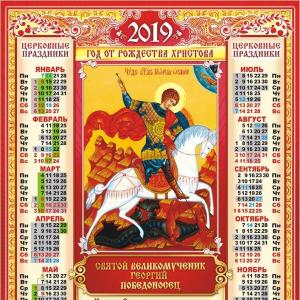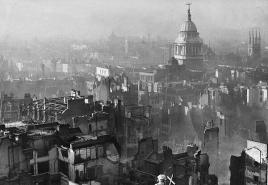What is an ode? Oda is a song of praise. New time Ode as a literary genre genre features
(more precisely, “pseudo-classical”) only in the sense that it borrowed form from ancient satirists, borrowed character, sometimes its themes, but the most significant content- was free from any restrictions and rules, was always alive and mobile, since, in its essence, it was doomed to always come into contact with reality. bualo, translated to Latin language, would only very slightly touch the life of Rome. It was not so with the "ode" - because of its isolation from life, it was easier to succumb to other people's influences. These influences conquered not only its forms, but also the content made " common place". That is why most of the odes are completely international and stereotyped, equally applicable to France, and to Germany, and to Russia.
Classicism as a trend in art and literature
The "classical" ode received all its specific features at the court of Louis XIV. This court enslaved not only the aristocracy, finally turning it into courtiers, but also attracted poets, artists, and scientists to Paris. Previously, singers lived in the castles of nobles and praised their feats of valor and hospitality - now, after the centralization of mental life - they crowded in the capital. The "Sun King", who copied the emperor Augustus, became sovereign for them Patron handed out awards and pensions. And so, from the hangers-on of the knight's castle, they became the king's pensioners: "enlightened absolutism" sheltered them, they grew stronger under his protection - and became the masters and legislators of the then all-European Parnassus; they glorified the king and their patrons, spread their glory throughout Europe.
These writers formed the first corporation French Academy. She was placed along with the highest government agencies France and received the high right to offer congratulations to the king on solemn occasions on a par with parliament. Since then, getting into this Academy has become the cherished dream of every French writer.
The "duty" of academic poets to praise the sovereign Maecenas created the typical features of the French ode. The odes of Pindar and Horace became models for her. Of course, the most sincere creator of the odes was Pindar, known for his laudatory songs in honor of contemporary events and heroes. These songs were sung to the accompaniment of the lyre. The lively, sincere attitude of the singer to the event, the sympathy of the listeners - these are the indispensable companions of this primitive ancient ode. More artificial was Horace's ode - it was already flattering poetry in honor of the benefactor, without the participation of the people, without singing and lyre, without faith in the gods, although with the traditional appeal to the gods and lyre, and the mention of the word: "I sing."
Pseudo-classics of the New Age borrowed the form and techniques from Pindar and Horace - this is how the theory false classical odes. Boileau, as always, successfully, in a few words, defined the theory of this ode - and his theory became the law for all subsequent ode writers.
The main feature of this ode is “pathos”, which raises the poet to heaven, to the height of the pagan Olympus, where, in a fit of delight, the poet sees the gods themselves; in such hymns in honor of the victor, in praise of victories, the swiftness of style, drawing the poet away from calm, flowing speech to appeals, digressions, and elevations arising from his excitement, created that “beau désordre”, “beautiful disorder”, which is inherent in sincerely inspired feeling , but in theory Boileau turned into "effet de l "art" (beautiful literary device). Many pseudo-classics, writers of odes, have this reception covered up a lack, or insincerity of feeling.
Pseudo-classical odes were successful in Germany, where they were usually composed in honor of various German princes who sat in their castles and towns and posed there as “little Louis XIV". No wonder that the grandiosely flattering French ode here took on the character of a gross lie. What was elevated, swollen in the setting of Versailles, but still had a basis in the enchantingly theatrical grandeur of the era and culture, then in the wilderness of virtuous Germany, in the atmosphere of beer and Junkerism, was a direct lie: the same appeals to the gods of antiquity, the same likenings heroes of antiquity, the same pathos - only instead of the grandiose personality of Louis - a pompous, ponderous figure of a German, "enlightened by the French world"!
However, the Germans also had poets, whose sincere feeling sometimes made its way through the conventions of ready-made, hackneyed forms. Such was, for example, Günther, who died young. For us Russians, he is valuable as a writer, highly respected
We have all heard about such a genre of literature as ode. So what is it? What is the origin of this genre? Who is considered the founder of the ode? What is the genre theory? All these questions can be answered in this article.
Definition of the concept of "ode"
Ode is an old song on any topic that was sung in Ancient Greece chorus with musical accompaniment. Later, they began to call it a laudatory verse dedicated to the glorification of important historical events or eminent persons. Sometimes the ode praises majestic natural phenomena. The style of such works is especially solemn, it is sustained in a sublime spirit with elements of pathos.
Translated from the ancient Greek ώδή (oide), ode is a song. Distinguished laudatory, dancing and deplorable.
V. Dombrovsky, for example, defined the concept as follows: “The word " ode "is in Greek the same as our" song ". Only not every song is an ode; this name is usually called a song in which the poet, touched by something high, unusual and worthy of surprise, is an object with which universal human , national or public interests, expresses his feelings with a fiery word, removed in all means of picturesqueness, expression and melody.
Signs of an ode
An outstanding sign of the ode is high spirits, a bold, irrepressible flight of fancy, an ardent feeling of inspiration and a poetic form of expression of thoughts adapted to this. Themes for glorification and exaltation are taken by a laudatory song from the sphere of high ideals, impulses, desires and competitions of a person. The will, the advancement of mankind, love for the native land, the struggle for the realization in life of high cliques of freedom, truth and brotherhood, ideal intentions and competitions, heroic deeds and deeds, the invincible power of song - all this can give rise to an uplift of spirit. And all this can be glorified in an ode.
Story
Ode is a genre of literature, the founder of which was the ancient Greek poet Pindar (4th century BC), who was the author of a number of laudatory songs in honor of the gods, the victories of the Greeks in wars and at the Olympic Games. His laudatory verses had a strict metrical form and composition (stanza - antistrophe - epod). The Roman lyricist Horace, who lived in the 4th century BC, composed odes in honor of Venus, Bacchus, and the emperor Augustus Octavian. In the Renaissance, the most famous composer of odes was the Frenchman P. Ronsard (mid-16th century). His odes sang of nature, which brought joy and peace to people (“To the Bellera Stream”). Some of Ronsard's odes were written in honor of love. This is an ode to a woman (“My friend, they led me to live more comfortably”).

Ode Genre Theory
Ode is a genre that has developed alongside panegyric works, primarily hymns and dithyrambs. These works were to be accompanied by playing musical instruments (harp, cithara, etc.) and dancing.
The canonical genre structure of the work, in which civic motifs clearly dominate, the ode acquired in the work of Malherbe, one of the founders of French classicism. The odes of Malherbe (beginning of the 17th century) defended the inviolability of the principles of absolutist statehood, praised the monarch and his relatives, high dignitaries and commanders.
The laudatory song received its theoretical justification in the poetic treatise by N. Boileau “ poetic art". Along with tragedy, ode is a literary genre that was considered high. N. Boileau formulated the rules for writing odes regarding language, metrics, and general poetic tonality. Compositionally, the song of praise begins with a chant, followed by a presentation of “noble and important matter”, which includes various episodes, digressions, and the so-called lyrical disorder (“jumping” of the poet from one motive to another), and the ode ends with an ending. According to N. Boileau, the ode was able to touch the reader's imagination with its state solemnity.

Outstanding ode writers in the literature of the 18th century were M.J. Chenier, Lebrun-Pindar (France), Klopstock, Schiller (Germany), Lomonosov, Kantemir, Trediakovsky (Russia). The latter introduced the term "ode" in Russian poetry. In the era of romanticism, a laudatory song occupied a significant place in the work of Byron ("Ode to the authors of the bill against the destroyers of machine tools"), Shelley, Kuchelbecker.

In the literature of the 20th century, the ode is extremely rare. As examples, it is worth recalling “Ode to the Library” by S. Kryzhanovsky, his own cycle “Odes” (“Ode in honor of a tree”, “Ode to a man”, “Ode to speed”), “Ode to a human language” by I. Muratov, “Ode to revolution " V. Mayakovsky, "Ode to Conscience" by I. Drach.
Classicism as a trend in art originated in France at the end of the 17th century. In his treatise "Poetic Art" Boileau outlined the basic principles of this literary trend. He believed that literary work created not by feelings, but by reason; Classicism is generally characterized by the cult of reason, caused by the conviction that only an enlightened monarchy, absolute power, can change life for the better. As in the state there should be a strict and clear hierarchy of all branches of power, so in literature (and in art) everything should be subject to uniform rules, strict order.
Translated from Latin, classicus means exemplary or first class. Classical writers were modeled on ancient culture and literature. The French classics, having studied the poetics of Aristotle, determined the rules of their works, which they later adhered to, and this became the basis for the formation of the main genres of classicism.
Classification of genres in classicism
Classicism is characterized by a strict division of literary genres into high and low.
- Ode - a work of praise and praise in poetic form;
- Tragedy is a dramatic work with a harsh ending;
- The heroic epic is a narrative story about the events of the past, which shows the whole picture of time as a whole.
The heroes of such works could only be great people: kings, princes, generals, noble nobles who devote their lives to serving the fatherland. In the first place they have not personal feelings, but civic duty.
Low Genres:
- Comedy is a dramatic work that ridicules the vices of society or a person;
- Satire is a type of comedy, distinguished by its sharpness of narration;
- A fable is a satirical work of an instructive nature.
The heroes of these works were not only representatives of the nobility, but also commoners, servants.
Each genre had its own writing rules, its own style (the theory of three styles), it was not allowed to mix high and low, tragic and comic.
The students of the French classics, diligently adopting their standards, spread classicism throughout Europe. The most prominent foreign representatives are: Molière, Voltaire, Milton, Corneille and others.



The main features of classicism
- Classicist authors drew inspiration from the literature and art of ancient times, from the works of Horace, Aristotle, thus the basis was the imitation of nature.
- The works were built on the principles of rationalism. Clarity, clarity and consistency are also characteristic features.
- The construction of images is determined by common features for time or era. Thus, each character is a thoughtful personification of a period of time or a layer of society.
- A clear division of heroes into positive and negative. Each hero embodies some one main feature: nobility, wisdom or stinginess, meanness. Often the characters have "talking" surnames: Pravdin, Skotinin.
- Strict adherence to the hierarchy of genres. Correspondence of style to genre, prevention of mixing different styles.
- Compliance with the rule of "three unities": place, time and action. All events take place in one place. The unity of time means that all events fit into a period of no more than a day. And the action - the plot was limited to one line, one problem, which was discussed.
Features of Russian classicism
 A. D. Kantemir
A. D. Kantemir Like European, Russian classicism adhered to the basic rules of direction. However, he did not become just a follower of Western classicism - supplemented by his national spirit of originality, Russian classicism became independent direction in fiction with its inherent features and characteristics:
- Classicist authors instead of antiquity took as a basis the national-historical images of Russia (the tragedies of Sumarokov "Dmitry the Pretender", "Mstislav", Knyazhnin's "Rosslav", "Vadim Novgorodsky");
- The presence of patriotic pathos in all the works of this time;
- The high level of development of the ode as a separate genre (odes of Lomonosov, Derzhavin).
Satirical direction - such genres as comedy, fable and satire, telling about specific phenomena of Russian life (Kantemir's satires, for example, "On those who blaspheme the teaching. To their own mind", Krylov's fables);
The founder of Russian classicism is considered to be A. D. Kantemir with his famous satires, which had political overtones and more than once became the cause of fierce disputes.

V. K. Trediakovsky did not particularly excel in the artistry of his works, but he had a lot of work in literary direction generally. He is the author of such concepts as "prose" and "poetry". It was he who conditionally divided the works into two parts and was able to give them definitions, substantiated the system of syllabic-tonic versification.

A.P. Sumarokov is considered the founder of the dramaturgy of Russian classicism. He is considered the "father of the Russian theater" and the creator of the national theater repertoire of that time.

One of the brightest representatives of Russian classicism is M. V. Lomonosov. In addition to a huge scientific contribution, Mikhail Vasilievich carried out a reform of the Russian language and created the doctrine of the "three calms".

D. I. Fonvizin is considered the creator of the Russian household comedy. His works "Foreman" and "Undergrowth" still have not lost their significance and are studied in the school curriculum.

G. R. Derzhavin is one of the last major representatives of Russian classicism. He was able to inscribe vernacular into strict rules in his works, thereby expanding the scope of classicism. He is also considered the first Russian poet.
The main periods of Russian classicism
There are several divisions into periods of Russian classicism, but, summarizing, they can be reduced to the main three:
- 90 years of the XVII century - 20 years of the XVIII century. Also called the Petrine era. During this period, as such, there are no Russian works, and translated literature is actively developing. This is where Russian classicism originates as a result of reading translated works from Europe. (F. Prokopovich)
- 30-50 years of the XVII century - a bright surge of classicism. There is a clear genre formation, as well as reforms in the Russian language and versification. (V. K. Trediakovsky, A. P. Sumarokov, M. V. Lomonosov)
- The 60-90s of the 18th century are also called the Catherine era or the Age of Enlightenment. Classicism is the main one, but at the same time, the emergence of sentimentalism is already observed. (D. I. Fonvizin, G. R. Derzhavin, N. M. Karamzin).
The curtain
From stories and genre theory
Oda is one of the main genres of classicism. It arose in ancient literature and at that time was a song with a wide lyrical content: it could sing the exploits of heroes, but it could also talk about love or be a cheerful drinking song.
The attitude to the ode as a song in a broad sense was preserved in French classicism. In the Russian theory of classicism, a more definite, narrow meaning is already invested in the concept of "ode". Sumarokov, Trediakovsky, and after them Derzhavin, speaking of an ode, mean a lyrical poem praising heroes. In Greek poetry, the ode was represented by Pindar, in French classicism by Malherbe, in Russian literature by Lomonosov.
They affirm the ode as a genre of heroic, civil lyrics, with obligatory "high" content and solemn, "sublime" style of its expression. From the ode as a genre of high lyrics, they distinguish the actual song. The song in their understanding is a lyrical poem dedicated only to love. It does not require an oratorical style, it is characterized by simplicity and clarity.
The ode as a genre of high solemn poetry receives predominant development in the literature of classicism during its heyday. This is due to the fact that the era with which the development of classicism was associated proclaimed the triumph common interests over personal interests. Solemn ode since antiquity sang major events external or internal life of the state. That is why the genre of high ode was more in line with the tasks of the era of national unity than, for example, the genre of love or drinking songs. The experiences of a person caused by the events of his personal life - love, separation from loved ones, their death - were relegated to the background. Only those experiences of the poet that reflected events of a national, nationwide scale could arouse general interest.
The Decembrist poet V. K-Küchelbecker very accurately defined the features of the high ode and considered the appeal to the genre as a measure of the poet's citizenship. He wrote in one of his articles: “In the ode, the poet is disinterested: he does not rejoice at the insignificant events of his own life, he does not complain about them; he broadcasts the truth and the judgment of Providence, triumphs about the greatness of his native land, throws thunderbolts on adversaries, blesses the righteous, curses the monster. The poet in the ode is the bearer of the national consciousness, the spokesman for the thoughts and feelings of the era.
This is what made it the leading genre of civil poetry of classicism, although it retained the features of a laudatory work. In this regard, the ode of classicism echoed the ode of ancient poets.
Ode in classicism was a genre of strict form. Its indispensable feature was lyrical disorder, suggesting the free development of poetic thought. Other constant elements became obligatory for its structure: "praise to a certain person, moralizing reasoning, predictions, historical or mythological images, the poet's appeal to nature, the muses, etc. They were included in the composition of the ode, regardless of its main theme and were a feature not only of Russian or a French ode / They were also inherent in the eastern, for example, Arabic, "
In this respect, the ode resembled an oratory: it had to have the same degree of evidence and emotional impact. An ode was built, like oratory, of three mandatory parts: an attack, that is, the introduction of a topic, reasoning, where this topic was developed with the help of image examples, and a brief but emotionally strong conclusion. Each of the three parts had its own construction features. But in any case, the arguments in favor main idea should be located, according to Lomonosov, "in such a way that the strong ones are in front, those who are weaker, those in the middle, and the strongest at the end."
The poetic scheme of the ode worked out by the theorists of classicism was preserved throughout its development, starting with the work of Lomonosov and ending with the work of his followers in the late 18th and early 19th centuries. And yet, the high perfection of the Russian ode was not determined by the fact that its authors exactly followed the external scheme, included or did not include certain elements in its composition.
A sign of real poetry is the truthful transmission of Geront's emotional excitement by the author. And this requires from the poet a good knowledge of human psychology and human morals, an understanding of how Lomonosov said, "from what ideas and ideas each passion is excited." In addition, the listener, according to the same Lomonosov, will be imbued with the same mood as the poet, only if the latter "himself has the same passion that he wants to arouse in the listeners"1. Therefore, an indispensable condition for the development of a lyrical theme in an ode, as, indeed, in any other lyrical poem, is the sincerity of the poet, the genuineness of his feelings.
As for the construction of the ode, the poet's enthusiasm did not exclude careful consideration of its main motives and their corresponding compositional parts. He did not rule out thinking about ways to influence the listener in order to evoke response feelings in him. However, all this had to remain outside the text of the ode.
The ode itself, addressed to the listeners, retained the character of free improvisation among true masters, when one thought evoked another. The impression of "lyrical disorder" created by such a development of the theme was external. The poet, moving from one thought to another, subordinated the construction of the ode to the disclosure of the main idea, the main feeling. This determined the compositional unity of all its parts, like a drama or a poem. That is why the odes of different authors, having much in common in construction, did not repeat each other. Their originality, their dissimilarity were determined by the personality of the poet, his outlook on life, his poetic skill.
The origin of the high ode genre in Russia is attributed by researchers to the end of the 16th century. In the 17th century, Simeon Polotsky's collection "Rhymologion"2 became a significant fact of panegyric literature. The ode genre was further developed at the beginning of the 18th century by F. Prokopovich. A major church figure, an associate of Peter the Great, an ardent patriot, Feofan Prokopovich sang in his odes the most important events of the era: the Poltava victory, the opening of the Ladoga Canal, etc. The staging of the theme of Peter the Great as an enlightened monarch, builder and hero is associated with him. It will then be picked up by Kantemir, Lomonosov and other poets - up to Pushkin with his poems "Poltava" and "The Bronze Horseman".
The Russian ode to classicism was created on a fusion of experience / ancient Russian, ancient and European poetry. It was created in relation to the conditions and tasks of Russian national life in the 18th century. The most rigorous examples of the genre belong to Lomonosov. Sumarokov, in his solemn odes, outwardly followed Lomonosov. However, his odes were distinguished by greater simplicity and clarity of style, and revealed other trends in the development of this genre.
Considering the history of the Russian ode, Yu. Tynyanov rightly saw two directions in its development. One he connected with the names of Lomonosov, Petrov, Derzhavin and saw his peculiarity in the presence of an ornate beginning, the other - with the names of Sumarokov, Maikov, Kheraskov, Kapnist, in which there was a deviation from oratorical intonations. Recognizing the existence of different stylistic tendencies in understanding and using the ode genre in Russian classicism, Y. Tynyanov, at the same time, believed that “the introduction of sharply different means of style into the ode did not destroy the ode as a high form, but supported its value”1. Indeed, the appeal to the genre of the Decembrist poets returned the oratorical intonations to the ode. In the future, she invariably retained the features of the genre of high poetry.
The main features of the ode genre and received the best answer
Answer from [expert]
Oda - (from ancient Greek oide - song) - the oldest genre of European poetry. In ancient Greece, odes were originally called choral songs on different topics accompanied by music and dancing. Gradually, first in ancient poetry, and then in the work of European classic poets, the ode became one of the most common and strict genres of “high”, solemn lyrics in terms of content and form. The famous odographers of antiquity were Pindar and Horace, who sang of gods and heroes.
The classicist ode was a solemn, oratorical genre, in which strong emotions were combined with prudence, "piitic" delight - with cold logic. The most important meaningful feature of the ode is a “high” subject (monarch, commander, event of national importance, social virtue, religious morality). The formal features of the genre required the use of iambic tetrameter and a stanza consisting of ten poetic lines divided into three parts: the first part consisted of four lines, the second and third three lines. All ten verses in the odic stanza were united by a strict system of rhyme: abab ccd eed.
An important side of the form of the ode is the composition, which gave the poem harmony, semantic completeness and persuasiveness. As a rule, the ode began with an introduction (one or two stanzas), in which the poet spoke about the subject that served as the source of his poetic enthusiasm. In the first stanzas there could also be an appeal to the muse. This was followed by the central, large in volume and most important in terms of content part of the ode. The poem ended with a final moralizing stanza-conclusion. In it, the poet expressed a generalizing judgment, often directly related to the "hero" of the ode.
The pathos of the ode required a special style. It was achieved using high, bookish vocabulary, primarily archaisms, metonymic paraphrases, and allegories. a huge role intonational-syntactic means played: exclamations and rhetorical questions, inversions, unusual syntactic constructions.
Answer from Yovetlana Alferova[newbie]
dy
The ode as a genre of high solemn poetry receives predominant development in the literature of classicism during its heyday. This is due to the fact that the era with which the development of classicism was associated proclaimed the triumph of common interests over personal interests, so the high ode genre was more in line with the tasks of the era than, for example, the genre of a love or drinking song. The experiences of a person, caused by love, separation from loved ones, their death, were relegated to the background. Only those experiences of the poet, which reflected events of a national, nationwide scale, could arouse general interest.
Ode in classicism was a genre of strict form. Like an oratorical speech, it was built from three obligatory parts: an "attack", that is, the introduction of a topic, reasoning, where this topic was developed with the help of image examples, and a short but emotionally strong conclusion. Each of the three parts had its own peculiarities of construction, but Lomonosov believed that the arguments in favor of the main idea should have been located "thus, so that the strong were in front, those who were weaker, those in the middle, and the strongest at the end."
The poet's delight did not preclude careful consideration of its main motives and their corresponding compositional parts. He did not rule out thinking about ways to influence the listener in order to evoke response feelings in him. However, all this had to remain outside the subject of the ode. The ode itself, addressed to the listeners, retained (or should have retained) the character of free improvisation, when one thought evoked another.
The forerunners of the ode genre in Russian literature were Rhymologion by Simeon of Polotsk, the cantes and vivati of the Petrine era, and the work of Feofan Prokopovich, who sang the most important events of the era and put in literature the theme of Peter I as an enlightened monarch, builder and hero, which would be picked up by Kantemir, Lomonosov etc. up to Pushkin with his poems "Poltava" and "The Bronze Horseman".
One of the most important features of Lomonosov's solemn ode is the colorfulness and expressiveness of the descriptions. So, the lyrical plot in "Ode on the Capture of Khotin" is based on a wide inclusion of epic elements. It begins with a description of the "delight", "Permesian heat" (inspiration) that gripped the poet at the news of the glorious victory of the Russian army over the Turks and Tatars, won in 1739. central part makes up the poet's story about the battle itself and his reflections in connection with this event.
Answer from Evgen[guru]
The social function of the ode becomes direct service to the growing absolutism.
Answer from Sonya Katkova[newbie]
Ode is a genre of lyric poetry; solemn, pathetic, glorifying work. In literature, odes are laudatory, festive, deplorable. By their nature, Lomonosov's odes are works intended to be spoken aloud. Solemn odes were created with the intention of reading aloud in front of the addressee; the poetic text of the solemn ode is designed to be a sounding speech, perceived by ear. A certain topic was declared in the ode - a historical incident or an event of a national scale.
Lomonosov began to write solemn odes from 1739, and his first ode is dedicated to the victory of Russian weapons - the capture Turkish fortress Khotin. In 1764 Lomonosov wrote his last ode. Over the entire creative period, he created 20 examples of this genre - one per year, and these odes are dedicated to such major events as the birth or marriage of the heir to the throne, the coronation of a new monarch, the birthday or accession to the throne of the empress. The very scale of the odic "case" provides solemn ode the status of a major cultural event, a kind of cultural climax in the national spiritual life.
The ode is characterized by a strict logic of presentation. The composition of the solemn ode is also determined by the laws of rhetoric: each odic text invariably opens and ends with appeals to the addressee. The text of the solemn ode is built as a system of rhetorical questions and answers, the alternation of which is due to two parallel operating installations: each individual fragment of the ode is designed to have the maximum aesthetic impact on the listener - and hence the language of the ode is oversaturated with tropes and rhetorical figures. Compositionally, the ode consists of three parts:
Part 1 - poetic delight, praise to the addressee, a description of his services to the Fatherland;
2 part - glorification of the past successes of the country, its rulers; a hymn to modern educational successes in the country;
Part 3 - the glorification of the monarch for his deeds for the good of Russia.
All solemn odes of Lomonosov are written in iambic tetrameters. An example of a solemn ode is "Ode on the day of accession to the All-Russian throne of Her Majesty the Empress Empress Elisaveta Petrovna in 1747." The ode genre allowed Lomonosov to combine lyrics and journalism within the framework of one poetic text, to speak out on issues of civil, public importance. The poet admires the innumerable natural resources of the Russian state:
Where in the luxury of cool shadows
In the flock of galloping deer
Catch the cry did not disperse;
Where the hunter did not mark with a bow;
With the ax farmer's thud
Singing birds did not frighten.
The abundance of natural resources is the key to the successful development of the Russian people. Central themes odes - the theme of labor and the theme of science. The poet appeals to the younger generation with an appeal to devote themselves to the service of science:
Be emboldened now
Show with your care
What can own Platos
And quick-witted Newtons
Russian land to give birth.
Lomonosov writes about the benefits of science for all ages. The ode creates an ideal image of a ruler who cares about the people, the spread of education, and the improvement of economic and spiritual development. The high "calm" of the ode is created by the use of Old Slavonicisms, rhetorical exclamations and questions, ancient mythology.
If in a solemn ode Lomonosov very often replaces the author’s personal pronoun “I” with the form of his plural- “we”, this indicates not the impersonality of the author’s image in the ode, but that only one facet of the author’s personality is significant for the solemn ode - exactly the one in which he does not differ from all other people, but approaches them. In a solemn ode, it is not the individual-private, but the national-social manifestation of the author's personality that is important, and in this respect Lomonosov's voice in the solemn ode is in full.







